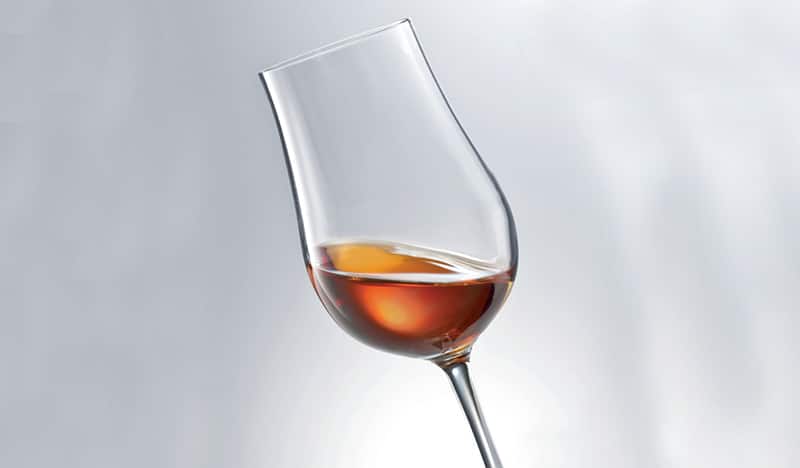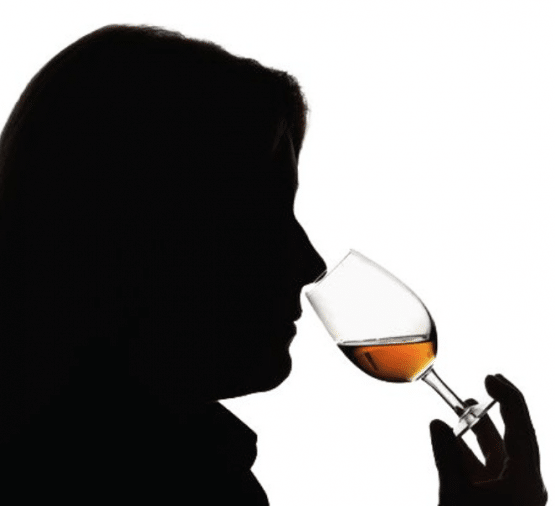
The most awaited part of the tasting: the glasses are in front of us, the liquid demands our full attention. The technical tasting consists of three parts: smell (everything you can smell), palate (when we introduce a sip in the mouth), final (the persistence of the distillate once swallowed).
Smell: we approach the first glass with caution. Given the high alcohol content, it is unnecessary to swirl the glass to cover the internal glass, as happens with wine. The high percentage of alcohol will certainly be complex to deal with: we do not get discouraged and prefer short passages without completely immersing our nose in our glass. Let’s also try to use the two nostrils alternately. Our olfactory memory will help us recognize scents that have followed us all our life: it will be our task to link these memories to something concrete to give a name to the sensations experienced. It is no coincidence that we can often connect to perfumes from our childhood, perhaps not easily codified because they are unique, experienced only by ourselves. The experience of various tastings will broaden our vocabulary by increasing the precision and recognition of the various aromas.
Let’s start from a fixed point: perfumes are not the same for everyone. We cannot think that everyone recognizes the same things in the same glass, precisely by individual experiences. Let’s discuss with our tasting companions and check on industry sites or perhaps with the producer’s tasting notes. Sharing is essential at this stage. We also compare the products in front of us: which one we like best, which seems more complex and multifaceted to us, which one we like or careless.

Palate: it’s time for the first sip. This is probably the most delicate moment of the tasting, as our mouth is not used to the high alcohol content, which risks compromising the taste—first, a small sip, very minimal. Let’s leave the distillate in the mouth for a few seconds and swallow it slowly. The impact of the liquid will be noticeable but less than with a full sip. Eventually, if we are at the first steps, we extend the distillate with water to lower the alcohol level, at least in our first tastings. Subsequently, we can interact more with the distillate, with more generous sips without ever exceeding, and longer stay in the mouth. Distillates are not all the same, even with the same alcohol content: some have a powerful mouth, others need time to express themselves at their best: let our palate judge.
The palate is a critical component in the tasting: we must be helped by our memory to recognize the main and secondary flavors, perhaps which express themselves after a few moments. The sensations can be different from area to area: from the tip of the tongue to the final part, up to the walls of the mouth and the palate itself. We try to pay attention to these details to have a complete picture of the product being tasted.
Final: this part gives us important information on the quality of the product. Once swallowed, what remains in the mouth and throat is the final: what “remains” of the product. The persistence can be very long, even reaching hours; the intensity varies from product to product.
Do not miss any news and the highest rated spirits!